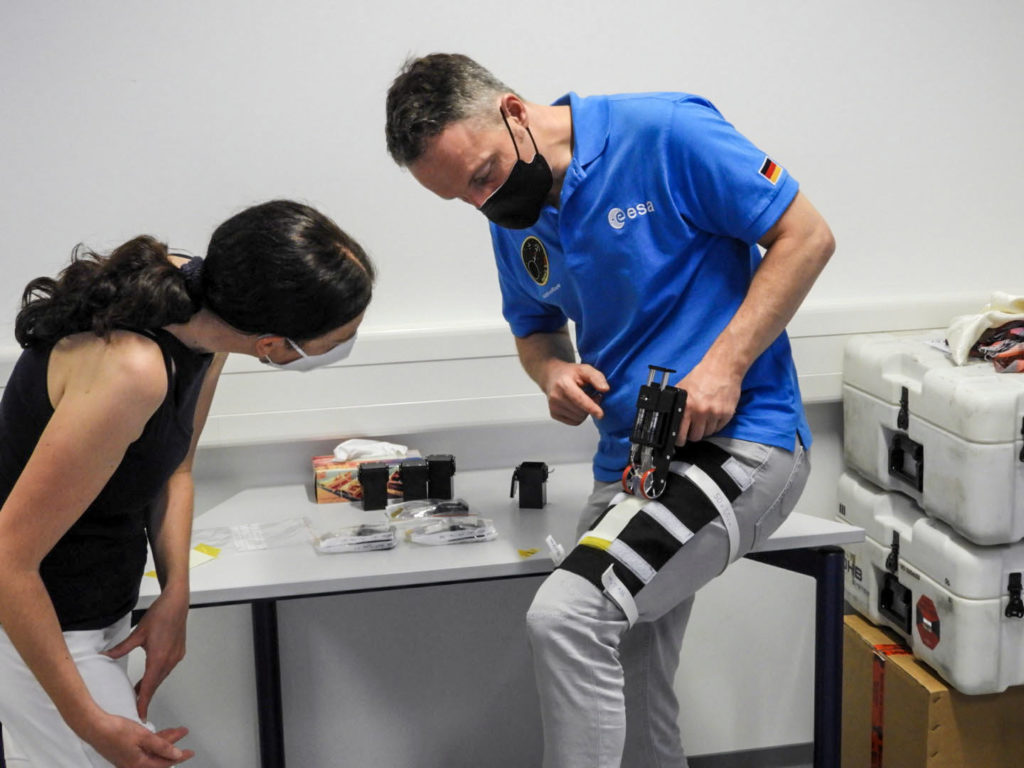A SpaceX Dragon resupply mission carrying 6,500 pounds of science experiments, including a handheld bioprinter prototype, is on its way to the International Space Station (ISS) after launching on December 21, 2021, from NASA’s Kennedy Space Center in Florida. Envisioned by the German Aerospace Center (DLR), this portable device, called Bioprint FirstAid, has the potential to facilitate the rapid use of formerly prepared bioinks containing a patient’s cells to form a band-aid patch in case of injury. This innovative microgravity printer holds promise for future long-duration missions to low Earth orbit (LEO), the Moon, and Mars and could be the next big thing on Earth.
As space agencies prepare for longer duration flights, surviving in microgravity is crucial, especially for crews living in close quarters, where a combination of stress and diminished immunity impact the spread of disease-causing microbes. This, in combination with lowered immunity and increased stress, can lead to humans in space becoming ill. Moreover, the microgravity environment itself can have harmful effects on the body, including delayed wound healing. As a result, space agencies have long encouraged research to understand how to protect astronauts in space to improve human health.
Developed, assembled, and qualified by German space company OHB System with support from scientists at the Technical University of Dresden, the bioprinter prototype is described as a robust, purely mechanical (no battery required) handheld bioprinter consisting of a dosing device in the handle, a print head, support wheels, and two bioink cartridges. The technology demonstration in space will not use real human cells but fluorescent microparticles.
The Bioprint FirstAid Handheld Bioprinter (Bioprint FirstAid) could create a tissue-forming patch to cover a wound and accelerate the healing process. Image courtesy of OHB System/DLR/European Space Agency.
When combined with two fast-curing gels, these microparticles create a plaster-like wound covering, which will be printed onto an astronaut’s foil-covered arm or leg and sent back to Earth for further testing. German ESA (European Space Agency) astronaut Matthias Maure––the first German astronaut to fly to the ISS on board a Dragon spacecraft––will devote much of his time to scientific research, including testing the bioprinter.
While training for his ISS mission, Maure experimented with the bioprinter device, applying the material to his leg, which was wrapped in foil. The distribution pattern of the printed samples on Earth, compared to the printed samples in space, is an essential value for the research. Overall, this project aims to test the printing technology and assess its applicability under space conditions for future missions in extreme habitats on and off-Earth.
Bioprint FirstAid provides a research opportunity to optimize bioprinting materials and processes. NASA considers that microgravity-based 3D tissue models are important for further understanding the bioengineering and bio-fabrication requirements essential to achieve highly viable and functional tissues. Under microgravity conditions, the pressure of different layers containing cells is absent and the potential sedimentation effect of living cell simulants. In addition, the stability of the 3D printed tissue patch and the potentially gravity-dependent electrolyte-to-membrane interface crosslinking process can be analyzed for future applications.
The researchers suggest that the bioprinting process of this prototype requires 10 minutes to obtain an appropriate crosslinking of the biopolymer and crosslinker (which serves as a stabilizing matrix) materials before covering the affected area like plaster and accelerating wound healing by facilitating the formation of new skin tissue. If the research evolves favorably, the handheld bioprinter’s rapid wound treatment technology would be ideal for healing bone fractures, skin and muscle injuries quickly and effectively during longer space exploration missions.
Moreover, the combination of cells, tissue-specific biomaterials, and high-resolution 3D bioprinting can enable scientists to develop new tissue and organ modeling techniques to understand better the biophysical mechanisms of tissue generation, regeneration, and longevity.
SpaceX Dragon resupply mission CRS-24 ready to launch science experiments to ISS. Image courtesy of SpaceX/NASA.
SpaceX Falcon 9’s launch of its Commercial Resupply Services (CRS-24) mission to the ISS carrying the bioprinter is scheduled to autonomously dock at the space station around 4:30 AM on December 22 and remain there for about a month. Aside from the Bioprint FirstAid, Dragon delivers other science experiments to the space station, including an investigation to monitor and profile the development of plants’ shoots and roots in microgravity, a fully degradable detergent for in-space laundry by Proctor & Gamble, and student microgravity science projects.
The handheld device will become the third bioprinting system at the ISS, joining Russia’s Organ.Aut 3D bioprinting platform, which successfully reached orbit in December 2018, and the BioFabrication Facility, developed by nScrypt and Techshot (recently acquired by space giant Redwire).
What’s more, these experiments will join the hundreds of investigations currently being conducted aboard the orbiting laboratory in the areas of biology and biotechnology, physical sciences, and Earth and space science. Advances in these areas will help keep astronauts healthy during long-duration space travel and demonstrate technologies for future human and robotic exploration beyond LEO to the Moon and Mars through NASA’s Artemis program, with the first crewed mission slated to take place no earlier than 2025.
